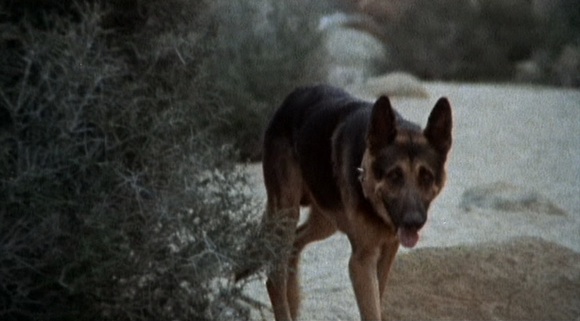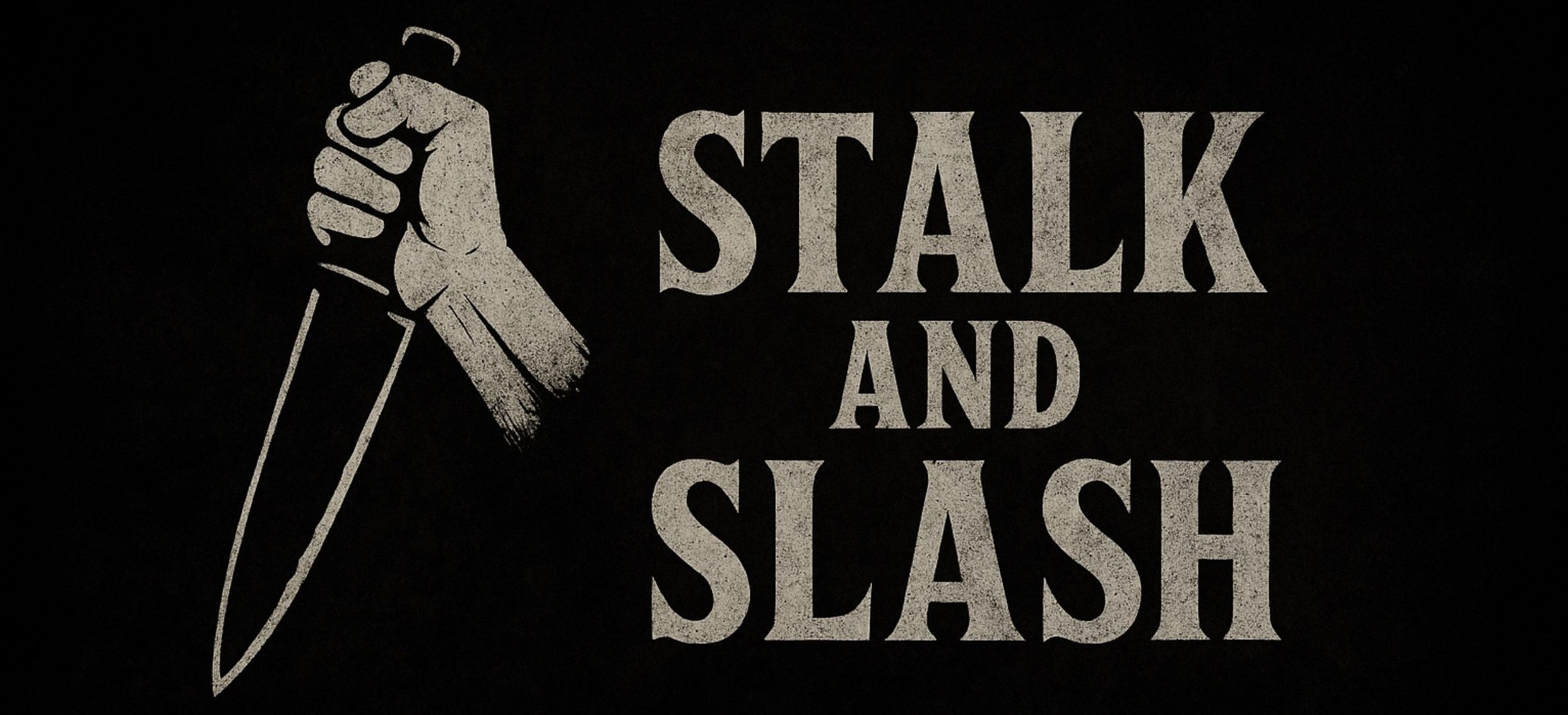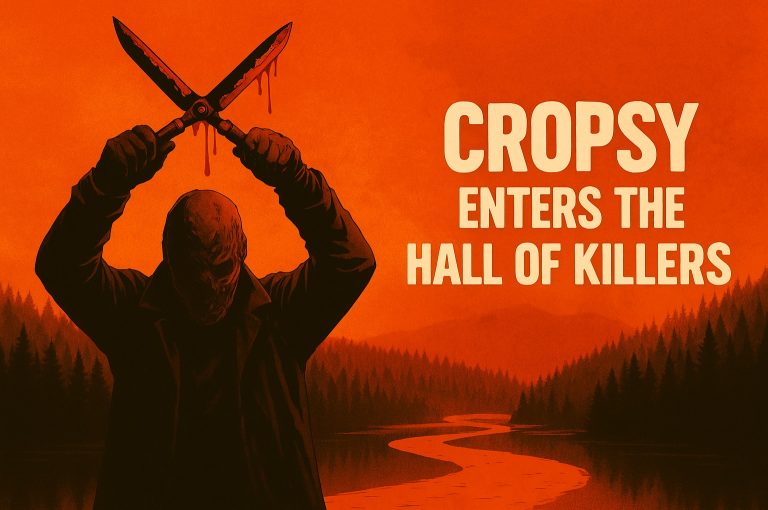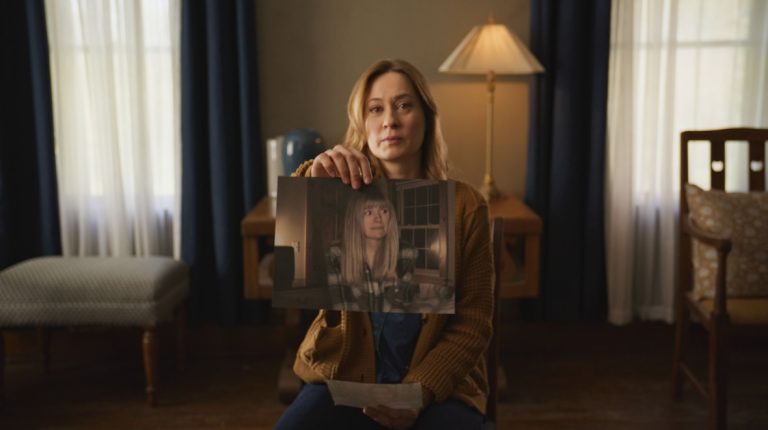The Hills Have Eyes Part II and the Great Doggy Flashback
Before Good Boy taught us how to feel genuine dread through the eyes of a loyal dog, Wes Craven’s The Hills Have Eyes Part II tried something so strange that it deserves to be preserved in a museum of cinematic oddities. The year was 1984. Mullet culture was strong, shoulder pads were powerful, and Craven thought, “You know what my mutant desert cannibal sequel needs? A dog having a flashback.”
Yes, you read that correctly. A dog. Having. A flashback.

Let us set the scene. The Hills Have Eyes Part II was already limping before it even reached cinemas. Shot on a shoestring budget and largely cobbled together from deleted ideas, the film was so cheap that half of it is composed of scenes from the first movie. Wes Craven, fresh off A Nightmare on Elm Street, clearly had one foot out the door. But even that does not explain the creative genius (or delirium) that led to Beast the German Shepherd reliving his past in full cinematic montage.
The moment arrives when the group of unlucky motorcyclists finds themselves stranded in the desert once again. Beast, faithful as ever, lifts his noble head, stares into the distance, and suddenly — we are whisked into a sequence of flashbacks where he remembers killing a cannibal in the first film. We cut between growling, slow motion, and Beast’s thousand-yard stare. The camera lingers lovingly, as if we are supposed to be deeply moved by his trauma. It is the first and last time in horror history that a dog’s internal monologue has been treated with this level of emotional weight.
Cinephiles call this scene “doggy flashback.” Regular viewers call it “the bit that made me question my life choices.”

Beast remembers everything — the desert, the screaming, the blood. He stares into space like a war veteran who has seen too much. You almost expect someone to hand him a tiny dog medal and a counselling leaflet. Craven, bless him, plays the entire thing with total sincerity. There is no wink, no laugh, just pure, undiluted commitment to canine trauma.
This, of course, has made it legendary. Horror fans still talk about it with a mix of awe and disbelief. Imagine pitching that today. “So we are going to have the dog recall the events of the previous film through flashbacks. Yes, the dog. No, not symbolically. Literally the dog.” Somewhere in that decision lies both the madness and the genius of 1980s horror cinema.
Now fast forward forty years and we arrive at Good Boy, a film that finally understands what Craven might have been attempting all along — telling a story from a dog’s perspective, but doing it well. Ben Leonberg’s supernatural thriller takes the idea of the dog’s point of view and turns it into something terrifying, poignant, and unexpectedly profound.

Where The Hills Have Eyes Part II made audiences laugh at Beast’s memory montage, Good Boy makes us weep for Indy, a dog who becomes the emotional anchor of a haunting ghost story. The difference is all in execution. Indy’s world feels real, tangible, frightening. We experience the haunted house through his senses — his hearing, his instincts, his fear. Leonberg does not need to cut to slow-motion flashbacks or give Indy a canine existential crisis. He simply lets us exist alongside him, and somehow that feels far more human than half the horror films of recent years.
It is almost poetic that the most touching dog-centred horror film in decades arrives in the same world that once gave us Beast’s psychic flashback. If Beast was the confused ancestor of cinematic dog perspectives, then Indy is the evolution — the fully realised version of what animal empathy in horror can look like. One had trauma editing. The other has heart.
The funniest part is that both films probably share a common goal: to make audiences care about the dog. Craven tried to make Beast’s experience meaningful, but somewhere between the stock footage and the soft focus, he accidentally created comedy gold. Leonberg, on the other hand, trusts his canine star to carry the weight of an entire feature. And it works.

The Hills Have Eyes Part II remains an absolute gem of accidental absurdity. It is the kind of movie that gets funnier the more you think about it. A film so proud of its flashback dog that it practically begs for applause. Without it, we might never have had the courage to take the idea seriously later. In its own ridiculous way, Beast walked so Indy could run — preferably through a haunted corridor, towards danger, while we shout at the screen for him to get out.
So here is to Beast, the German Shepherd who remembered. And here is to Good Boy, the movie that finally made the dog’s perspective something to be proud of. It took forty years and one truly unforgettable canine montage, but horror has finally gone to the dogs in the best possible way.






